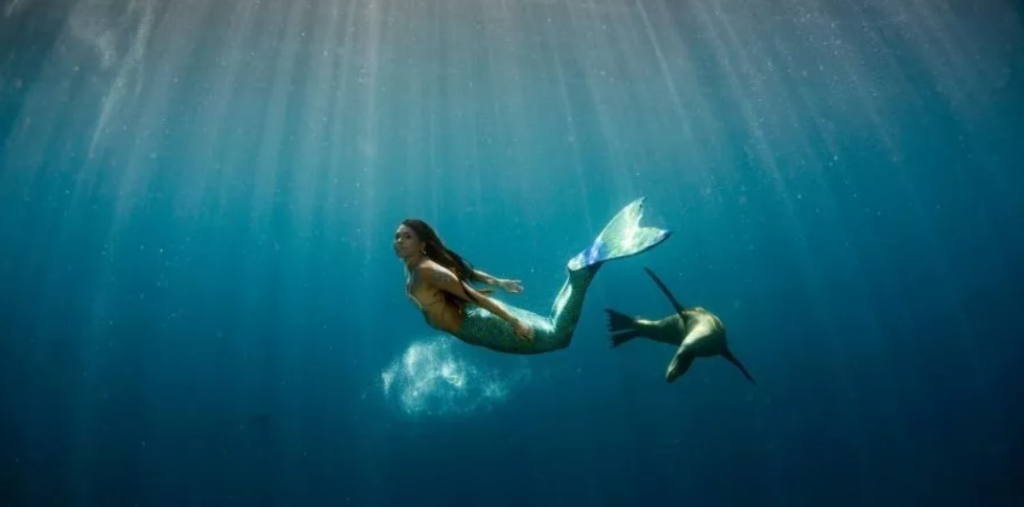Mermaids, along with other mystical beings, have a significant role in popular culture. However, the question remains: are they real, or did they exist in the past?
These enchanting creatures, residing in the vast oceans, have appeared in literature, ancient texts, and films for centuries. Are they based on real creatures, like dinosaurs, or are they fantastical creations that spark our creativity and imagination?
In this article, we’ll explore the mermaid’s history and seek to ascertain their existence.
What are mermaids?

Mermaids are fascinating creatures with the upper body of a woman and a beautiful fish-like tail. They’ve been mentioned in stories for many years. These mystical beings have been part of European, Asia, and African folklore.
The mermaid legend originates from tales about Merfolk or Merpeople. The Merfolk were described as humans living in the water, with mermaids being the female version of these mystical beings and mermen were the males.
There’s no proof that mermaids are real because they exist in stories and myths. However, it’s possible that some form of water-dwelling people like Merfolk may have existed in the past, though not quite as we imagine them today.
What defines a mermaid?

Mermaids have appeared in different ways around the world. Some see them as alluring and wicked sea creatures, while others view them as beautiful and graceful women.
These two perspectives on mermaids are quite different. In one, they are seen as wicked temptresses who use their charm and songs to lead sailors into the sea. The other view portrays them as sea goddesses, often depicted as lovely and elegant figures. They’re shown as lonely beings desiring human connections.
These interpretations of mermaids, both good and evil, have changed over time and were influenced by Germanic Romantic poets and post-romantic painters. In Greek mythology, they were referred to as sirens, dangerous creatures that lured and tempted sailors.
When was the first documentation of a mermaid?

One of the earliest mentions of Merfolk comes from a Chinese text written in the fourth century BC. The Shanhaijing is a classic Chinese text that talks about mythical creatures, the geography of the region, and more.
In China, they referred to these beings as “jiāorén,” which translates to shark people and was often written about in medieval texts. The first written accounts of mermen can be found in the “Record of strange things,” a text from the early sixth century CE.
Mermaids also make an appearance in Homer’s Odyssey, written around 675–725 BCE. In this story, their enchanting singing lures sailors to their doom. However, in the poem, the sailors manage to escape unharmed.
Around 1,000 BC, mermaids are mentioned in Assyria. There’s a legend about the goddess Atargatis, who turned into a mermaid after jumping into a lake out of shame for killing her lover. She couldn’t become a full fish but took on the form of a mermaid due to her beauty. In Greek mythology, she’s known as the goddess Derketo.
When was the first sighting of a mermaid?

The most well-known account of someone seeing a mermaid was by Christopher Columbus. On January 9, 1493, in his logbook, he wrote about an extraordinary sighting he had never witnessed before.
While sailing off the coast of Africa, Columbus saw three beings that looked quite unique. These creatures weren’t as beautiful and magical as the ones in stories but seemed simpler, like fish with human faces. Some people believe Columbus might have been mistaken and actually saw manatees or other sea creatures. From a distance, these animals could be confused with mermaids.
Who was The Little Mermaid?

“The Little Mermaid” is one of the most well-known mermaid stories in history, especially after Disney made a movie about it in 1989. The story, originally written by Hans Christian Andersen in 1837, is about a lonely mermaid who was willing to leave her life in the ocean to get a real human soul.
This story was one of the first to turn a sad mermaid tale into a happy one. It’s probably the most famous mermaid story in the world. It was one of the first stories to show a mermaid as innocent and not trying to tempt people. In Copenhagen, Denmark, where the story was written, there’s a mermaid statue that many tourists visit.
In Conclusion

The fascination with mermaids will likely continue through the generations. However, whether they are real remains uncertain. While there may be some sightings and stories about them, there isn’t solid proof of their existence.
Another idea is that the Merfolk mentioned in folklore may have existed, but that doesn’t mean they looked like half-human, half-fish creatures just because they lived by the sea. Over time, descriptions may have been interpreted as mythical creatures.
Even though mermaids are part of folklore, there’s not enough strong evidence to say they exist in the real world.

